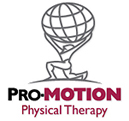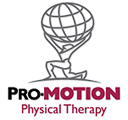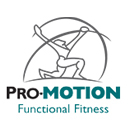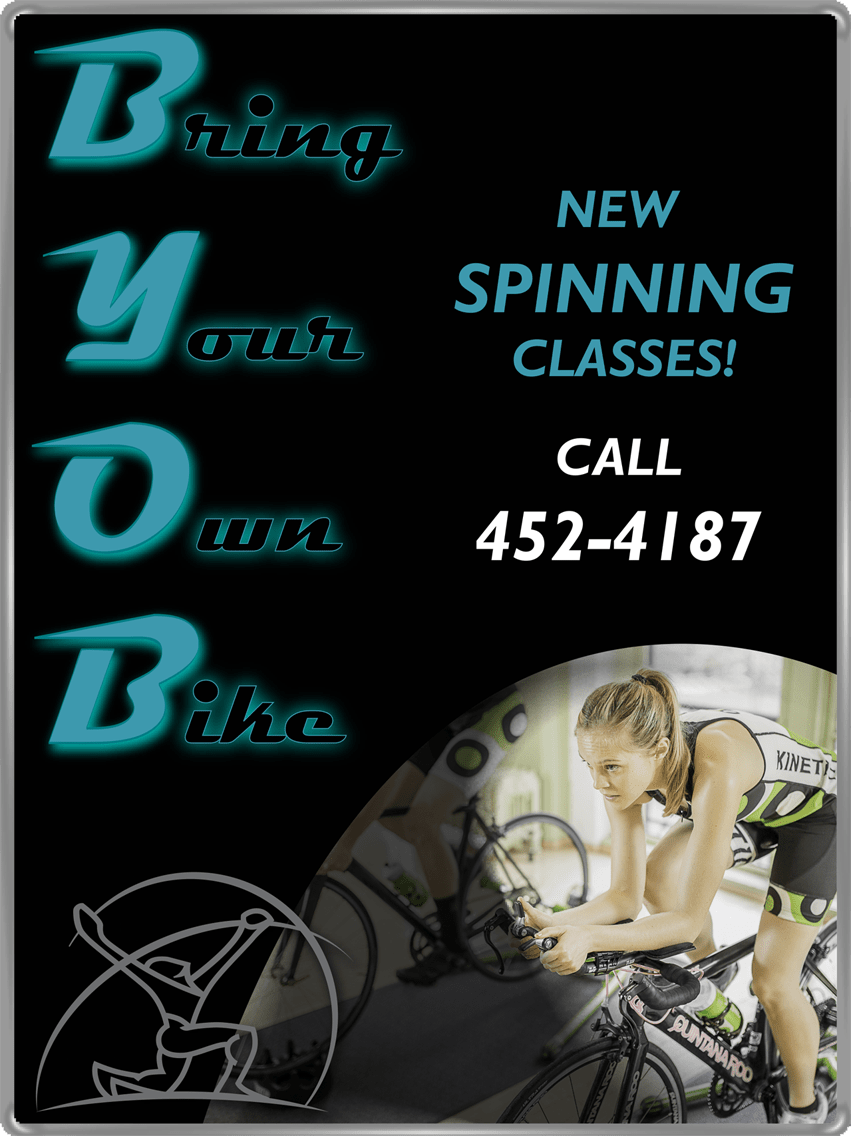FROM THE PROMOPT BLOG

Pro-Motion is proud to offer a new series of blogs by one of our own Physical Therapists, Kirsten Clarke-Hollingbery, on training for the Boston Marathon. We realize that not everyone is training for the same goal, in this case probably the most famous long distance run in the world. But the message she provides can be used by anyone training for running in general, or those reading deeper to the core of the message and understanding how to set goals and create new habits in maintaining a healthier you. We hope you enjoy.
And The Boston Marathon Training Begins
Hi Runners!
My name is Kirsten Clarke-Hollingbery, I am a Physical Therapist at Pro-Motion. I am an avid runner, but marathons are not normally my distance of choice. I love the half marathon, 10k singular, and trail runs. However, a marathon was on my bucket list so I signed up for the Tunnel Light Marathon last September. The marathon went way better than expected and I ran my last three miles at 6:30ish pace; and I felt awesome. In hindsight, I should have run the whole race faster but I didn't want to "hit the wall", so I played it safe.
My time ended up qualifying for the Boston Marathon and I got accepted! As excited as I was, I also dreaded the next round of training, especially winter training. So, I gave myself a break from the heavy mileage from October to the end of November to focus on cross training, yoga and strength training. I think this is the foundation in staying injury free (which I managed to do) and plan to do again for the second round. In December, I started building my long run mileage in one mile increments starting with eight miles and the last weekend of the month I ran 12 miles. I got a "You are hard core" yelled at me as I was attempting to run up a snowy hill on a country road.
On weekdays, I have been getting to know the treadmill which I typically loath (stay tuned for some of my workouts to beat boredom). Contradictory to what most would think when training for a marathon, one of my keys to staying healthy is actually running less. I run every other day and cross train or do yoga on my off days from running. This provides adequate recovery time and, in my opinion, creates a well rounded athlete. The one thing I think makes a HUGE difference is stretching daily. Not just your typical stretching, I do a series of 3D stretches for the hips, legs, thoracic spine and even pecs after EVERY run. Most runners (I used to be one of them) don't stretch enough or even correctly.
I sincerely hope you enjoy this blog series as I train for the Boston and are able to glean some information to use in your own personal training.
Please stay tuned for videos on key 3D stretches that I think every runner should do DAILY.
Read Kirsten’s full bio here.
Overcome The Woes Of Treadmill Running
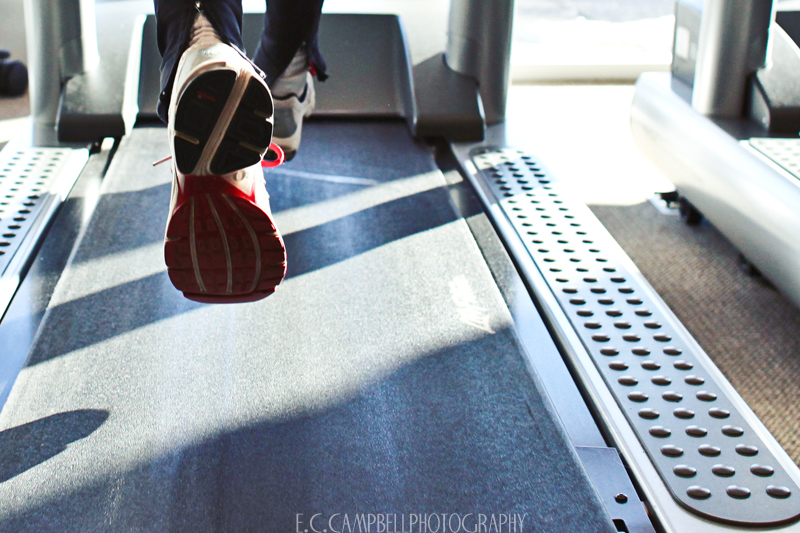
Hi Runners!
Today, I would like to discuss tips for staying injury free while treadmill running.
First, be sure to check your arm swing. Make sure that your arms are driving forward and not crossing midline. Your arms should graze your hips as they swing back and then drive forward symmetrically. If you cross midline, you are wasting energy and it can lead to injuries.
Second, manage your speed and elevation. A flat section of road is typically at 1% grade, so this should be your minimum on the treadmill. This grade can also simulate the workload of outdoor running; factoring in wind resistance and the belt moving under you vs. you over ground. If you think about running outside, your typical run has various terrains which naturally allow us to change our speed. If we get tired, we slow down, if we feel good, we speed up. When you set the treadmill at a specific pace, many of us try to stay at that pace no matter what. You know who you are. However, running at the same speed and same elevation can lead to repetitive overuse injuries. Running is repetitive already; let’s not add to the stress.
Check out a few of my workouts here that do combos of speed intervals at 1% grade and elevation intervals.
If you have questions about my training, feel free contact us or talk to the exercise physiologists in our Functional Fitness Center.
Read Kirsten’s full bio here.
Have you been running on the snow or ice?
Recently, I ran 14 miles on 4inches of snow. I was only able to keep my footing by using Due North Traction aids. They are spikes attached to rubber that fit over your running shoe. I would highly suggest getting some if you are a winter runner.
However, since I started running in/on the snow, I can tell you that I am quite sore in both my hip flexor and calf muscles. This is likely due to changes in my running form that occurs from running on an alternate terrain.
When running on slippery ground, the tendency is to land flat footed or toes first for more traction. If you land heel first, chances are you are going down. Running flat footed requires more calf involvement to decelerate the forces of the body prior to toe off. In most cases the heel doesn't actually hit the ground.
For the hip flexors, I think they are sore due to running up hill. Slipping backward on the wet, compact snow forced them to work harder to keep me stable and moving forward.
Needless to say, I stretched out a ton after this run and am feeling pretty good today.
Once again, stretching is key!! See my 3D stretch videos below!
Boston Marathon Training Plan
Hi Runners!
I have been asked to post my training plan. I adapted my plan from a number of online sources to work with both my schedule and body. My plan is about training smarter, not necessarily logging in the heavy mileage. The key is to build your long run slowly so your body has time to adapt. You also want to make sure to build in active recovery and a rest day.
Many runners also neglect strength training. I think this is another key element to incorporate. I will post some strength training exercises that I commonly do that are specific to running. This is a plan that has worked for me but will not necessarily work for everyone. Feel free to adapt for your own body, or discuss a plan best suited for you with our exercise physiologists at Pro-Motion Functional Fitness.
* Mondays and Wednesdays are either a hill interval session or speed interval session. Since I have been training during the winter, these are on the treadmill (see treadmill workouts on prior posts). If I were training outside, I would switch the intervals for tempo or fartleks during my run.
Strength Training for Runners
Hi Runners!
Today, I wanted to share with you my advice on how to train smarter and not necessarily logging tons of miles. When I was running in college, there was a lot of pressure on how many miles I had to run each day and week. Many runners feel this same pressure that is often self-fulfilling and sometimes self-destructive. Many runners also feel guilty if they don’t run. I used to feel this way and it led me to a number of injuries.
Post college, I decided that the only way to get out of this way of thinking was to stop running competitively so I would not have to train as aggressively. This didn’t last long before I decided to train for a half marathon. I was back on my old training program and adding even more mileage. Sadly, my old injures came back to haunt me and I also slacked on the strength training component.
At about this time I got into PT school and ran shorter distances, cross trained, added in more yoga and strength training and my injures gradually went away. Fueled by my passion and new education, I decided to take on a new approach to my training. I am now a more successful and balanced runner.
I don’t run every day and yet I am faster and less injured. I make the most of the days I do run like adding in intervals on the treadmill or tempos when outside. I substitute a short run for a cross train session 1-2 days per week. I do a combo of core, multi-plane leg/hip strengthening, balance and plyometric drills (plyos) instead of running at least one time per week. I do yoga as a way to combine strength, balance and flexibility and active rest one day per week. I feel so much stronger and more balanced with this type of training.
The key to strength training for running is making sure you train all the planes of motion and adding in balance. Running is simply an alternating single leg activity. You must keep this in mind when you design your strength plan. Runners tend to do forward lunges, standard squats, and core on the back. Instead, think about what you must do when you run and be creative with your exercises to target your hips and core standing up. Different planes or directions of motion are important in training your muscles in all the ways they move and respond to ground reaction forces. Most of the time compensations, which lead to injuries, occur because of weakness in the under-trained planes (such as the side to side and rotational planes).
I challenge you to substitute one of your shorter runs for a strength training session. Check out some of my videos of some different exercises and plyos to spice up your workout.
Train Smarter
Hi Runners!
Today, I wanted to share with you my advice on how to train smarter and not necessarily logging tons of miles. When I was running in college, there was a lot of pressure on how many miles I had to run each day and week. Many runners feel this same pressure that is often self-fulfilling and sometimes self-destructive. Many runners also feel guilty if they don’t run. I used to feel this way and it led me to a number of injuries.
Post college, I decided that the only way to get out of this way of thinking was to stop running competitively so I would not have to train as aggressively. This didn’t last long before I decided to train for a half marathon. I was back on my old training program and adding even more mileage. Sadly, my old injures came back to haunt me and I also slacked on the strength training component.
At about this time I got into PT school and ran shorter distances, cross trained, added in more yoga and strength training and my injures gradually went away. Fueled by my passion and new education, I decided to take on a new approach to my training. I am now a more successful and balanced runner.
I don’t run every day and yet I am faster and less injured. I make the most of the days I do run like adding in intervals on the treadmill or tempos when outside. I substitute a short run for a cross train session 1-2 days per week. I do a combo of core, multi-plane leg/hip strengthening, balance and plyometric drills (plyos) instead of running at least one time per week. I do yoga as a way to combine strength, balance and flexibility and active rest one day per week. I feel so much stronger and more balanced with this type of training.
The key to strength training for running is making sure you train all the planes of motion and adding in balance. Running is simply an alternating single leg activity. You must keep this in mind when you design your strength plan. Runners tend to do forward lunges, standard squats, and core on the back. Instead, think about what you must do when you run and be creative with your exercises to target your hips and core standing up. Different planes or directions of motion are important in training your muscles in all the ways they move and respond to ground reaction forces. Most of the time compensations, which lead to injuries, occur because of weakness in the under-trained planes (such as the side to side and rotational planes.)
I challenge you to substitute one of your shorter runs for a strength training session. Check out some of my videos of some different exercises and plyos to spice up your workout.
Boston Re-Cap

Hi Runners!
Thank you for following me on my journey to Boston…I hope you enjoyed my running words of wisdom. I wanted to share my race experience and some final pieces of advice, especially for anyone considering running the Boston Marathon.
First, here’s a little history about the race. The first Boston Marathon was held in 1897 at 24.5 miles. In 1924 it was lengthened to the Olympic standard of 26.2 miles. It took 48 years (1972) until women could formally enter and compete in this race. I am thankful to female runners Roberta Gibb and Katherine Switzer who ran in 1966 and 1967, respectively, despite not being allowed to simply because they were women. Their demonstration and strength was a powerful turning point in women’s running. I was one of 13,000 women who participated in the 2016 marathon, which celebrated 50 years of women in the Boston Marathon.
The race is always held on the third Monday of April, Patriots’ Day, a holiday commemorating the start of the Revolutionary War. Most New Englanders have this day off from work which is another reason it brings in such a crowd of supporters. From Hopkinton to Boston, the streets are lined with thousands of people. You feel like a celebrity running down the road. Imagine if Seattle hosted the Super Bowl and the Seahawks were playing in it. That’s how Boston is every year for this race.
Even though it was an amazing experience, I had a difficult race with a number of different factors playing a role. The weather was predicted to be 57 degrees and ended up at 72 degrees when I started at 10:32am. The other factor that was difficult is that you must get on a bus to the start at 6:30am and gear check BEFORE you ride to the start. The clothes you want to wear prior to your race must be discarded at the start to be donated to charity due to security. I did not read this small detail until the night before my race. Most people got cheap clothes, towels, blankets to lie on etc. I found my least liked half zip long sleeve and that was it.
When you get to athlete’s village, it is like a homeless camp. People are wearing plastic trash bags, sitting on cardboard and wearing torn up running gear or pajama pants. It was funny to see, as we are some of the best runners in the country. Everyone sits for 3.5 hours on their small piece of cardboard in the grass making random friends and trying to get pumped up. That’s a long time to wait to run 26.2 miles. Luckily, my friend and fellow runner found me and took me to the vans where the charity runners get to be. This place was great with no lines for the Port-o-Pottys (huge deal for runners).
When my wave/corral was finally called, we were sorted and walked with thousands of other runners to the start, which is approximately a mile from the village. I have never run an event with so many people. The gun went off and 7,500 runners (including myself) started down a fairly steep hill. The first mile of the race was SUPER slow. I could hardly run in the mass of people, nor move up. After hearing my first split, I freaked out and ran way too fast for the next 2 miles trying to get around people so that I could run my speed.
After I got a good groove, I was able to enjoy all the spectators and high-fives as I ran past. I had a great 10k split and was hopeful that it was going to be a good run. By mile 8 or 9, my feet, especially my left foot really started hurting. I also began to feel weak, felt tingling in my legs and a little panic arose. I quickly assessed the situation and realized I had not eaten enough calories prior to my run (3 hour wait time prior to the race) and the heat was starting to get to me. I ate my blocks that I brought with me (200 calories) and started alternating Gatorade and water. I also started throwing water on my face and shirt. The worst part was that I had to slow way down (20 seconds or more than I wanted to run).
I realized that my goal time of 3:10-15 and 7:15 mile splits was not going to happen. I hit some wind and rollers on the flats and ran an easy pace until I started to feel better. By the half marathon mark (13.1miles) they finally handed out GU (which I hate) but made myself suck it down for calories and started to feel a little better. I tried to pick up my pace a little but changed my goal to 7:30 splits and tried to start moving up.
I put aside the pain I was feeling in my foot as it started to get numb and focused on my form and the spectators. I think they helped push me along, as I was not having the race I wanted. There were signs, writing on the road, popsicles, ice chips, water hoses, and water tents that the spectators brought for us. It was a blur and internal battle from the half to Mile 17.
Mile 17 is the iconic turn at the fire station to the start of the Newton Hills. These hills are under rated and very tough at this point of the course. Most people talk about “heartbreak hill” but watch out for these as well. My 30k average split dropped to a 7:45 pace and I was struggling. I was getting water and Gatorade every mile, which is atypical for me. I think I had the most pained look on my face. I kept trying to change and will myself to continue running and to run faster (I was still determined to beat my qualifying time). After Newton Hills came Heartbreak Hill (mile 20 to 21.5) and it as not as bad as I thought it would be. Most likely, because I knew I was getting close to the finish.
At the top, I saw a sign that said “It’s all downhill from here” and I almost started crying. I started to pick up the pace down the hill, feeling some elation, but then my quads and toes began to scream at me and I remembered I still have 5 more miles to go! I slowed it down and the pain started to settle as I continued down the hill.
The finish shoot into Boston was amazing. You could see it as you ran down the hill and the sea of runners and spectators in front of you. Those last 5 miles were not coming fast enough… pain, disorientation and emotions were all flooding me at this point. I ran under the underpass “Boston Strong” approximately a mile from the finish, which was where the bombings took place. I almost cried again, as I could not imagine what those people would have felt in that place and time. I was barely keeping it together.
There were a couple of small hills that felt like giants at this point. Then I turned a corner to run up a small hill and my husband yelled my name. I waved but immediately had to get back to business. I felt like I may lose it at any point and I was so close…I could see the finish. Again, I felt a wave of emotions. I almost felt like I was running in slow motion. I willed myself to speed up and nothing happened.
For the last 200 meters to the finish, I gave it everything I had and kicked it in. I promptly collapsed and was supported by two people down the finish shoot. I was so happy to be done. I could hardly walk, was cramping, and delirious.
By the time I actually got to the point where I could take off my shoes, I saw what created the pain. I had the most disgusting blood blisters on 6 out of my 10 toes. My toes were black and blue and looked like I had severe frostbite. The pain made sense. I felt sick and had a huge salt craving so I had my husband order me a huge pile of fries, chips, and bread. It took me several hours before I could get myself back in my shoes and hobble to the bus to take me back to my hotel room.
I ended up finishing 479th out of 12,168 women and 4,066 out of 26,639 people. That’s close to the top 3% of women. I ran a personal best marathon of 3:16:03. It was not what I wanted but I am proud of what I accomplished. I like that I competed against some of the best runners in this country and faired pretty darn well. This marathon was truly a test of both my physical and mental strength. I know I trained really well and really hard and it paid off by allowing me to run the way I did, considering all of the other circumstantial challenges. I am not sure if another Boston is in my future but I am going to run another Marathon and get my 3:10 time.
Thanks again for following me on my journey. Hope to see you all out there this summer running and racing.
Kirsten

Final Tips for the Boston Marathon
- Bring old sweats/running clothes, blanket/towel for the athlete’s village.
- Bring an extra sandwich to eat before your race (plain bagels don’t cut it).
- Put sandals in your gear check bag.
- Pace yourself in the beginning of the race. Don’t freak out if your splits are slow for the first 3 miles as it is better to save some energy for the hills.
- Wear sunglasses if it is sunny (this is a no brainer… but I didn’t).
- Body glide is essential if you chafe (TMI… but happened to me and is very uncomfortable toward the end of the race).
- Train on hills; both ups and long gradual downs.
- Place the hills toward the end of your training run.
